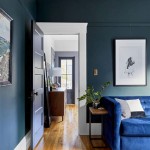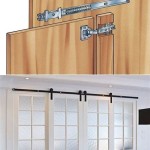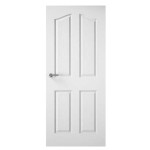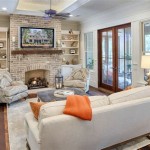What's My Interior Design Style? Finding Answers with Mr. Kate Inspiration
Identifying one's interior design style can be a challenging endeavor. The vast array of aesthetics, trends, and influences can often lead to confusion and uncertainty. One popular avenue for exploring design styles is through the work of Mr. Kate, a design personality known for her eclectic and approachable approach to interior design. Understanding Mr. Kate's design philosophy and using her projects as inspiration can be a valuable tool in deciphering one's own personal style preferences.
Mr. Kate's design aesthetic is characterized by a blend of bohemian, modern, and vintage elements, often infused with DIY projects and personalized touches. This approach emphasizes creativity, self-expression, and a commitment to making spaces feel both beautiful and functional. By examining these core elements, individuals can begin to discern which aspects resonate with them and how they can be incorporated into their own homes.
Key Point 1: Understanding the Fundamentals of Design Styles
Before diving into specific examples of Mr. Kate's work, it's crucial to have a foundational understanding of common interior design styles. These styles represent distinct sets of principles, colors, materials, and furniture choices. Familiarizing oneself with these fundamentals provides a framework for analyzing and identifying personal preferences.
Some prominent interior design styles include:
*Modern:
Characterized by clean lines, minimalism, and a focus on functionality. Modern design often incorporates neutral color palettes, natural materials like wood and concrete, and a lack of ornamentation. *Contemporary:
Often confused with modern, contemporary design refers to current trends. It is constantly evolving and embraces new materials, technologies, and aesthetics. *Industrial:
Inspired by factories and warehouses, industrial design features exposed brick, ductwork, concrete floors, and vintage or reclaimed furniture. *Bohemian (Boho):
Reflecting a free-spirited and unconventional lifestyle, bohemian design embraces eclectic mixes of colors, patterns, textures, and global-inspired decor. *Minimalist:
An extreme form of modern design, minimalism prioritizes simplicity and functionality above all else. Spaces are sparsely furnished, with a focus on essential items and clean, uncluttered surfaces. *Traditional:
Rooted in classic European decor, traditional design features ornate furniture, rich colors, intricate patterns, and a sense of formality. *Transitional:
A blend of traditional and modern elements, transitional design seeks to create a balanced and timeless aesthetic. It often combines classic furniture shapes with contemporary fabrics and finishes. *Scandinavian:
Emphasizing simplicity, functionality, and natural light, Scandinavian design incorporates light wood tones, neutral colors, and cozy textiles. *Eclectic:
A curated mix of different styles, eclectic design is characterized by a harmonious blend of disparate elements, reflecting personal taste and individuality. *Farmhouse:
Inspired by rural living, farmhouse design features rustic furniture, natural materials, and a cozy, welcoming atmosphere.By understanding the distinguishing features of each style, individuals can start to identify elements that appeal to them and begin to formulate their own unique aesthetic.
Key Point 2: Analyzing Mr. Kate's Design Projects for Inspiration
Mr. Kate's design portfolio offers a rich source of inspiration for individuals seeking to define their interior design style. Her projects often showcase a blending of styles, demonstrating how different elements can be combined to create unique and personalized spaces. Analyzing these projects involves identifying the dominant design elements, understanding the color palettes used, and recognizing the types of furniture and accessories incorporated.
For example, consider a hypothetical Mr. Kate project featuring a living room renovation. The room might include a mid-century modern sofa upholstered in a vibrant velvet fabric, paired with a rustic coffee table made from reclaimed wood. Walls could be painted in a warm neutral tone, adorned with an eclectic gallery wall featuring a mix of vintage prints and modern artwork. Accessorizing might include a woven rug with a bohemian pattern, potted plants, and decorative pillows in various textures and colors.
By dissecting this example, it's possible to identify several design influences at play. The mid-century modern sofa represents a nod to clean lines and classic design, while the rustic coffee table adds a touch of natural and industrial charm. The gallery wall showcases an eclectic mix of styles, reflecting a personal and artistic sensibility. The bohemian rug and colorful pillows contribute to a sense of comfort and vibrancy.
Individuals can apply this method to other Mr. Kate projects, identifying the specific elements that resonate with them and noting how these elements combine to create a cohesive and visually appealing space. This process can help to clarify personal preferences and inform design decisions.
Furthermore, paying attention to Mr. Kate's use of DIY projects is essential. She often incorporates handmade or repurposed items into her designs, adding a unique and personal touch. This approach encourages creativity and self-expression, allowing individuals to create spaces that truly reflect their personalities.
Key Point 3: Translating Inspiration into Personal Style
Once inspiration has been gathered from Mr. Kate's projects and a foundational understanding of different design styles has been established, the next step involves translating that inspiration into a personalized design aesthetic. This process requires careful consideration of personal preferences, lifestyle needs, and the existing features of the space being designed.
Consider the following steps:
*Identify Key Preferences:
Reflect on the elements identified as appealing in Mr. Kate's projects. What colors, patterns, furniture styles, and textures resonate most strongly? Are there specific design styles that consistently capture attention? Note these preferences to create a baseline for the design process. *Assess Lifestyle Needs:
Consider how the space will be used. Is it a high-traffic area that requires durable and easy-to-clean materials? Is it a relaxing retreat that calls for soft textures and calming colors? Understanding these needs will help to prioritize functionality and comfort in the design. *Evaluate Existing Features:
Take into account the existing architectural features of the space, such as the size and shape of the room, the amount of natural light available, and any existing built-in elements. These features will influence the design choices and may inspire new ideas. *Experiment with Combinations:
Don't be afraid to mix and match different styles to create a unique and personalized look. Experiment with combining elements from different sources of inspiration, but be sure to maintain a sense of cohesion and balance. *Create a Mood Board:
A mood board is a visual representation of the desired aesthetic. It can include images of furniture, fabrics, colors, and accessories that reflect the personal style. Creating a mood board helps to visualize the final outcome and refine design choices. *Start Small and Iterate:
Begin with small changes, such as painting a wall, adding new accessories, or rearranging furniture. Observe how these changes affect the overall feel of the space and make adjustments as needed. Design is an iterative process, and it's important to be open to experimentation and refinement.Ultimately, finding one's interior design style is a personal journey that requires exploration, experimentation, and self-reflection. By drawing inspiration from sources like Mr. Kate's design projects, understanding the fundamentals of different design styles, and translating that inspiration into a personalized aesthetic, individuals can create spaces that are both beautiful and functional, reflecting their unique tastes and lifestyles.
Design Team Mr Kate S Home Renovation Tips Business Insider
Design Team Mr Kate S Home Renovation Tips Business Insider
Design Team Mr Kate S Home Renovation Tips Business Insider

Mr Kate

Mr Kate Decorates With David Bromstad Diy Painting And Decor Interior Design

What S My Aesthetic Mr Kate Reveal Unique Blend Up Recycle
Design Team Mr Kate S Home Renovation Tips Business Insider

We Surprise Our Kid With A Playroom Makeover

Mr Kate

Winston Lift Top Coffee Table Mr Kate
Related Posts








